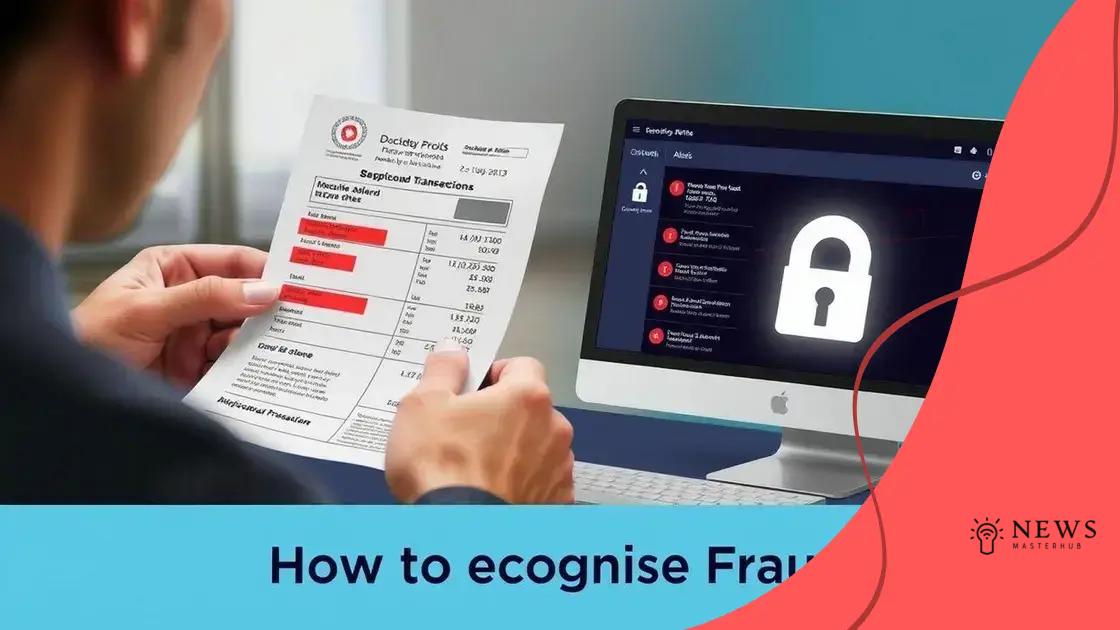Digital payments face fraud risks: What you need to know

Anúncios
Digital payments face fraud risks including phishing, account takeover, and card-not-present fraud, making it essential for users to implement strong security measures like two-factor authentication and regular account monitoring.
Digital payments face fraud risks that threaten users daily. Have you ever wondered how these risks can affect your transactions? In this article, we’ll delve into what you need to know to stay safe.
Understanding digital payment systems
Understanding how digital payment systems work is essential in today’s fast-paced world. These systems have transformed how we conduct transactions, making payments quicker and more convenient.
Anúncios
There are several types of digital payment systems, each with its unique features. Digital wallets, for example, allow users to store and manage multiple payment methods in one place.
Types of Digital Payment Systems
Here are some common types:
- Mobile payment systems: Such as Apple Pay or Google Wallet, enable payments using smartphones.
- Online payment platforms: These include PayPal and Stripe, facilitating online purchases securely.
- Cryptocurrency transactions: Digital currencies like Bitcoin offer an alternative payment method.
- Bank transfers: Digital options provided by banks for transferring funds electronically.
Each system has its advantages and challenges. For instance, mobile payments are incredibly convenient but require a stable internet connection. On the other hand, cryptocurrency is secure but not widely accepted.
Anúncios
Moreover, understanding these systems helps users identify the best options for their needs. Factors like transaction fees, security measures, and user experience play a vital role in choosing a payment method that meets individual preferences.
As these systems evolve, staying informed about updates and innovations is crucial. Users can better safeguard their finances by recognizing potential risks and understanding how to navigate these digital environments effectively.
Common types of fraud in digital payments
Common types of fraud in digital payments can impact users significantly. Understanding these threats is vital for protecting personal and financial information.
Among the most prevalent forms of fraud is phishing. Scammers often impersonate legitimate companies to obtain sensitive data like passwords and credit card numbers. Victims may receive fake emails or messages that appear to be from credible sources, leading them to harmful websites.
Types of Digital Payment Fraud
Here are some common tactics used by fraudsters:
- Account takeover: Cybercriminals gain access to your account, changing passwords and details to make unauthorized transactions.
- Card-not-present fraud: This occurs when someone uses your card information for online purchases without having the physical card.
- Chargeback fraud: A legitimate purchase is disputed, often by falsely claiming that a transaction did not occur.
- Malware and spyware: These malicious programs can capture keystrokes, stealing sensitive information.
Another threat is identity theft. Fraudsters can use stolen information to create fake identities, applying for credit cards and loans. This type of fraud can severely affect a victim’s credit score and financial health.
Combating these fraud types requires vigilance. Users should regularly monitor their accounts and transactions for any unusual activity. Additionally, enabling two-factor authentication adds an extra layer of security against unauthorized access.
Staying informed about these issues helps individuals recognize the warning signs of fraud and take proactive steps to minimize risks.
How to recognize potential fraud

Recognizing potential fraud is crucial in safeguarding your finances. Many users may not be aware of the signs indicating fraudulent activities, making education and awareness essential.
One common method to spot fraud is by monitoring your account statements for unusual transactions. Regular checks allow you to catch irregular purchases early, preventing wider damage. If something looks unfamiliar, it is wise to investigate further.
Signs of Potential Fraud
Here are some indicators that you might be facing fraud:
- Unexpected notifications: Receiving alerts about transactions you did not initiate can be a red flag.
- Unfamiliar devices: If you notice logins from unknown devices or locations, change your password immediately.
- Declined transactions: Multiple attempts to use a card that has been accepted before may indicate that your card is compromised.
- Suspicious emails or messages: Watch out for unsolicited messages requesting sensitive information.
Education plays a significant role in fraud prevention. Users should familiarize themselves with these signs and engage in training or resources that enhance their understanding of digital security. Additionally, use security software to protect data and prevent malware infections that can lead to fraud.
Additionally, having a support network helps track issues more efficiently. Knowing whom to contact in case of suspicious activity allows for prompt action. These measures can significantly reduce the impact of potential fraud.
Tips for securing your digital payments
Securing your digital payments is crucial for protecting your finances and personal information. Following some best practices can help you reduce the risk of fraud and keep your transactions safe.
One of the first steps to securing your payments is to use strong, unique passwords. Avoid using easily guessable information, like birthdays or common words. Instead, consider using a password manager to generate and store complex passwords.
Effective Tips for Securing Payments
Here are some useful tips to enhance your payment security:
- Enable two-factor authentication: This adds an extra layer of security, requiring a second verification step before accessing your accounts.
- Regularly monitor your accounts: Check your bank statements and transaction history frequently to catch any unauthorized transactions early.
- Use secure networks: Avoid making transactions over public Wi-Fi. Instead, use a private network or a VPN for added security.
- Keep software updated: Regularly update your devices and apps to protect against the latest security vulnerabilities.
Another important aspect is to stay informed about phishing scams. Be cautious with emails or messages requesting sensitive information. Legitimate companies typically won’t ask for such details through these channels.
Finally, consider using digital wallets. These provide a secure way to store your payment information and often include additional security features like encryption. Using these wallets can further protect your data while making transactions easier.
The future of digital payments and security
The future of digital payments and security is evolving rapidly, driven by technological advancements and changing consumer behaviors. As people increasingly adopt digital transactions, understanding the trends is vital for both consumers and businesses.
One of the notable trends is the rise of contactless payments. These payments allow users to complete transactions quickly by simply tapping their cards or smartphones at checkout. This method enhances convenience and reduces the risk of physical contact, which has become more important in recent years.
Emerging Technologies in Digital Payments
Several innovative technologies are shaping the landscape of digital payments:
- Blockchain technology: It offers secure and transparent transaction processing, reducing the risk of fraud.
- Artificial intelligence: AI can detect unusual patterns in transactions, allowing for faster identification of potential fraud.
- Biometric verification: Using fingerprints or facial recognition for payments adds an additional layer of security.
- Cryptocurrencies: Digital currencies continue to gain traction, with many businesses starting to accept them for transactions.
As digital payments become more integrated into our daily lives, security will also need to advance. Users must remain vigilant about protecting their information. Utilizing strong passwords and enabling two-factor authentication will remain vital.
The growth of mobile wallets signifies a shift towards a cashless society. Many consumers find it easier to manage their finances using digital wallets, which also keep track of spending. With this change, industries will likely see further developments in payment security, ensuring that personal and financial details are safeguarded.
In conclusion, understanding digital payments and their associated fraud risks is essential for everyone. As technology advances, so do the methods used by fraudsters. By staying informed and aware, individuals can better protect their finances. Implementing strong security measures such as two-factor authentication, monitoring accounts regularly, and recognizing potential fraud signs can make a significant difference. Embracing new technologies, such as contactless payments and digital wallets, provides convenience but also a responsibility to ensure safety. As we move towards a digital future, being proactive will help us enjoy the benefits of digital payments securely.
FAQ – Frequently Asked Questions about Digital Payments and Security
What are the common signs of digital payment fraud?
Common signs include unexpected notifications of transactions, unfamiliar devices accessing your account, and suspicious emails requesting sensitive information.
How can I secure my digital payments?
You can secure your payments by using strong, unique passwords, enabling two-factor authentication, and monitoring your accounts regularly for unusual activity.
What is two-factor authentication and why is it important?
Two-factor authentication adds an extra layer of security by requiring a second verification step, making it harder for unauthorized users to access your accounts.
How do digital wallets improve payment security?
Digital wallets store payment information securely and often include security features like encryption and biometric authentication, reducing the risk of fraud.





